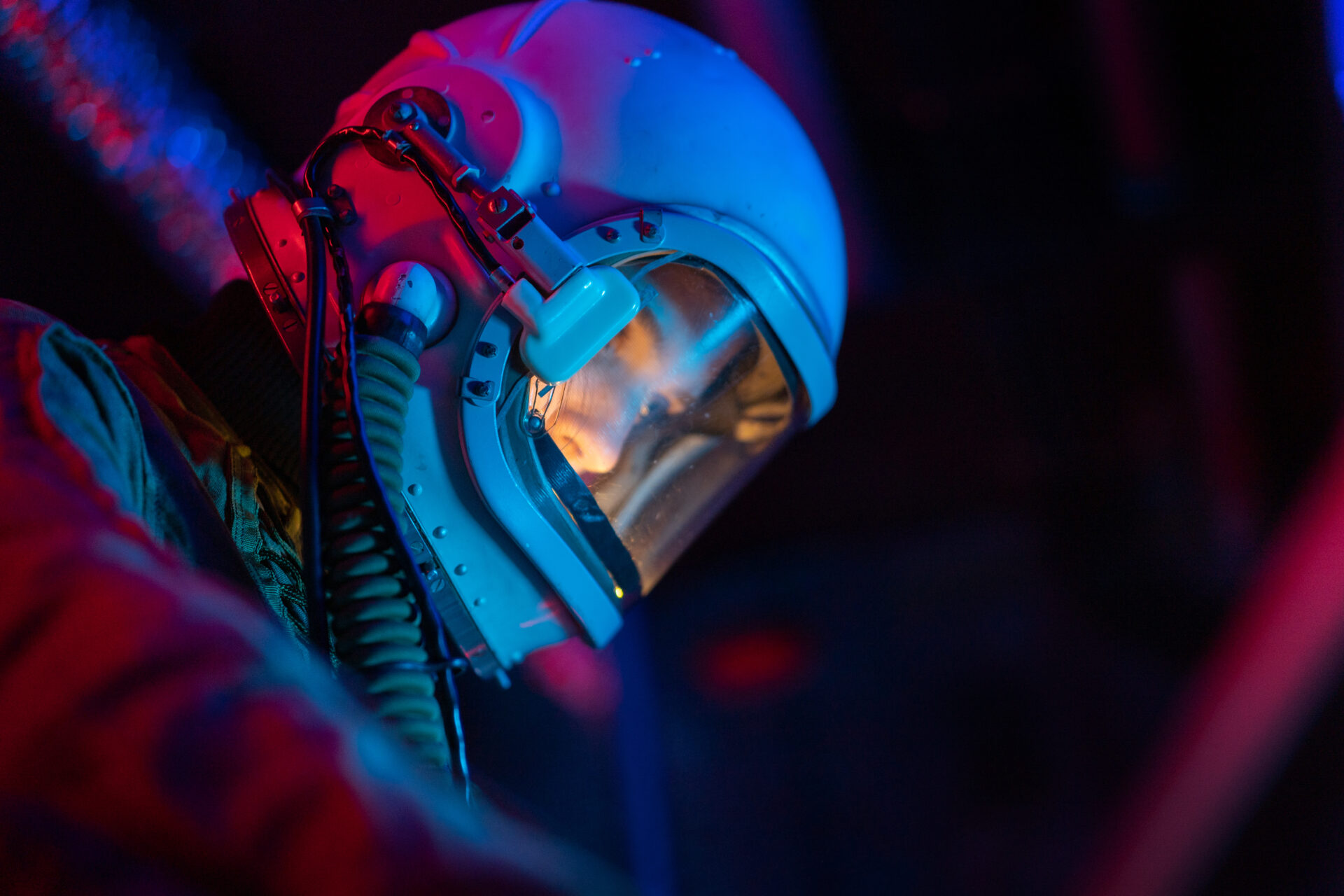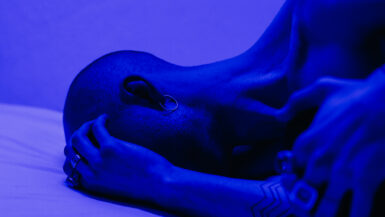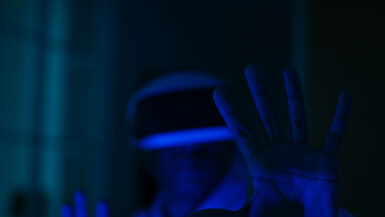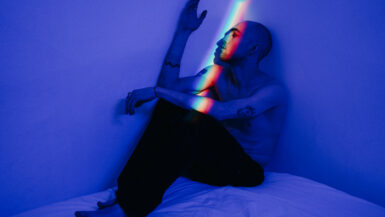In today’s fast-paced digital world, the impact of blue light exposure on our sleep and productivity cannot be overstated. As we increasingly rely on electronic devices, understanding the effects of blue light on our circadian rhythms is essential for both night owls and early birds alike. In this comprehensive article, we will delve into the science behind blue light, explore how it influences our sleep patterns, and discuss practical strategies for mitigating its negative effects on our overall well-being and productivity. Whether you are a nocturnal creature or a morning person, this insightful piece will equip you with valuable knowledge to optimize your daily routine and improve your sleep quality.
Blue Light’s Disruption of Circadian Rhythm
As the sun sets and darkness envelops the sky, our bodies naturally begin to prepare for rest. However, exposure to blue light emitted from electronic devices can interfere with these natural processes, disrupting our circadian rhythm and wreaking havoc on our sleep patterns. In this section, we will delve into the underlying mechanisms of blue light’s impact on our internal clocks, and discuss how night owls and early birds can both be affected.
How Blue Light Suppresses Melatonin Production
Melatonin, the hormone responsible for regulating our sleep-wake cycle, plays a crucial role in maintaining a healthy circadian rhythm. During the evening, our bodies begin to produce more melatonin, signaling that it’s time to wind down and prepare for sleep. However, blue light exposure can suppress the secretion of melatonin, making it difficult to fall asleep and stay asleep throughout the night.
For night owls, this suppression of melatonin can exacerbate their natural inclination to stay up late, further delaying their bedtime and impacting their overall sleep quality. Similarly, early birds who are exposed to blue light in the evening may find it challenging to wake up feeling refreshed and energized, as their bodies struggle to sync with their natural sleep-wake cycle.
Delayed Sleep Phase Syndrome and Blue Light Exposure
Delayed Sleep Phase Syndrome (DSPS) is a sleep disorder characterized by a persistent inability to fall asleep at a desired bedtime, often resulting in insomnia and excessive daytime sleepiness. Research has shown that exposure to blue light can contribute to the development and perpetuation of DSPS, particularly in individuals who are already predisposed to this condition.
For night owls, regular exposure to blue light may lead to a worsening of their DSPS symptoms, while early birds may find themselves struggling to maintain a consistent sleep schedule due to the effects of blue light on their circadian rhythm.
How Blue Light Affects REM Sleep and Dreaming
Rapid Eye Movement (REM) sleep is a vital stage of the sleep cycle, during which our bodies consolidate memories and engage in essential restorative processes. Studies have found that exposure to blue light can lead to a reduction in REM sleep duration, resulting in poorer sleep quality and negatively impacting cognitive function.
Both night owls and early birds are susceptible to the detrimental effects of blue light on their REM sleep, which can manifest as difficulty concentrating, memory issues, and a decrease in overall productivity.
Armed with this knowledge, it becomes clear that managing blue light exposure is essential for maintaining a healthy circadian rhythm and ensuring optimal sleep quality. By being mindful of our electronic device usage and implementing strategies to minimize blue light exposure, we can create a more conducive environment for restorative sleep and improved productivity, regardless of our natural sleep preferences.
Improving Productivity by Managing Blue Light Exposure
In an era where screens are an integral part of our daily lives, it is essential to establish a healthy balance between technology use and optimal sleep. By effectively managing blue light exposure, we can create an environment that supports both productivity and restorative sleep, regardless of whether one is a night owl or an early bird. In this section, we will explore practical strategies to minimize the impact of blue light on our sleep and productivity, ensuring that we can fully harness our potential throughout the day and night.
Embrace the 20-20-20 Rule to Reduce Eye Strain
Prolonged screen time can lead to digital eye strain, which can negatively impact productivity and contribute to sleep disturbances. One effective strategy to combat this issue is the 20-20-20 rule, which suggests taking a 20-second break to look at something 20 feet away every 20 minutes. This simple technique can help relax your eye muscles, reduce eye strain, and minimize the effects of blue light on your sleep.
Opt for Blue Light-Blocking Tools
Several tools and applications can help reduce blue light exposure from electronic devices. Blue light-blocking glasses, screen protectors, and software applications like f.lux or Night Shift can filter out blue light emissions, allowing you to continue using your devices without compromising your sleep quality and productivity.
Create an Electronic-Free Sleep Sanctuary
Establishing boundaries between your digital life and bedtime routine is crucial for managing blue light exposure. Designate your bedroom as a space free from electronic devices, and consider adopting a calming pre-sleep routine that includes activities such as reading a physical book, practicing relaxation techniques, or engaging in gentle stretches. This intentional separation can help signal to your brain that it is time to wind down and prepare for restorative sleep.
Adjust Your Device Usage Based on Your Sleep Preferences
It’s essential to tailor your blue light management strategies to your natural sleep preferences. Night owls may benefit from reducing blue light exposure in the late evening to encourage earlier sleep onset, while early birds should focus on minimizing blue light exposure in the hours leading up to their preferred bedtime. By understanding your unique sleep needs, you can develop a personalized approach to blue light management that supports your productivity and overall well-being.
With these practical strategies in place, managing blue light exposure becomes a seamless part of your daily routine, ensuring that you can optimize your sleep and productivity, regardless of whether you are a night owl or an early bird. As we continue to navigate the digital age, it’s crucial to prioritize our sleep health and establish habits that promote a healthy balance between technology use and restorative rest.
Night Owls vs Early Birds in Blue Light Exposure
When it comes to blue light exposure, the effects on individuals can vary significantly depending on their natural sleep preferences. In this section, we will delve into the unique challenges faced by night owls and early birds when it comes to blue light exposure, and explore tailored strategies to manage its impact on their sleep and productivity. By understanding the nuances between these two sleep types, we can better equip ourselves to navigate the digital world and create an optimal environment for rest and rejuvenation.
The Unique Challenges Faced by Night Owls
Night owls, or individuals who naturally gravitate towards staying up late and waking up later in the day, can be particularly susceptible to the negative effects of blue light exposure. With a natural inclination to use electronic devices during the evening hours, night owls experience a greater risk of melatonin suppression and disruptions to their circadian rhythm. This can result in delayed sleep onset, difficulty maintaining a consistent sleep schedule, and a higher likelihood of developing sleep disorders such as Delayed Sleep Phase Syndrome (DSPS).
To counteract these challenges, night owls can benefit from implementing strategies such as setting a designated “electronics curfew” in the evening, using blue light-blocking tools, and creating a relaxing bedtime routine that encourages a gradual transition to sleep.
Addressing Blue Light Exposure for Early Birds
Early birds, or those who naturally prefer waking up early and going to bed earlier, may also experience the negative effects of blue light exposure. While they may not be as prone to staying up late with electronic devices, early birds can still experience disruptions to their circadian rhythm and melatonin production if they use screens in the hours leading up to their preferred bedtime.
To minimize the impact of blue light on their sleep and productivity, early birds can focus on creating a calming pre-sleep routine that avoids screen use, incorporating relaxation techniques, and utilizing blue light-blocking tools when screen use is unavoidable.
Personalized Strategies for Optimal Sleep and Productivity
Ultimately, the key to managing blue light exposure for both night owls and early birds lies in understanding one’s unique sleep preferences and tailoring strategies accordingly. By developing a personalized approach to blue light management, individuals can create a sleep environment that is conducive to restorative rest and enhanced productivity.
For example, night owls may benefit from gradually shifting their bedtime earlier and reducing evening screen time, while early birds can focus on minimizing blue light exposure in the hours leading up to bedtime. By adopting these individualized strategies, both sleep types can reap the benefits of improved sleep quality and increased productivity in their daily lives.
In summary, the impact of blue light on night owls and early birds is an essential consideration in our increasingly digital world. By recognizing the unique challenges faced by each sleep type and adopting tailored strategies to manage blue light exposure, individuals can optimize their sleep environment, enhance their productivity, and ultimately, safeguard their overall well-being.
Strategies to Minimize Blue Light Effects on Sleep
As we’ve explored the impact of blue light on both night owls and early birds, it’s crucial to implement effective strategies that can help minimize the negative effects of blue light on our sleep. In this subsection, we will discuss various approaches to reduce blue light exposure and create a sleep-friendly environment that caters to your unique sleep preferences.
Establish a Consistent Sleep Schedule
One of the most effective ways to counteract the impact of blue light on sleep is to maintain a consistent sleep schedule. Going to bed and waking up at the same time every day, even on weekends, helps regulate your internal clock and improve sleep quality. This consistency can help counteract any disruptions caused by blue light exposure, allowing you to wake up feeling refreshed and energized.
Limit Screen Time Before Bed
Reducing your screen time in the hours leading up to bedtime is a critical step in minimizing the effects of blue light on your sleep. Aim to turn off electronic devices at least one hour before bed, giving your body ample time to wind down and prepare for sleep. Instead, engage in relaxing activities such as reading a physical book, journaling, or practicing meditation.
Opt for a Warmer Light Setting on Devices
Many electronic devices now offer a “night mode” or “warm light” setting, which reduces the amount of blue light emitted by the screen. By adjusting your device settings to utilize these warmer hues, you can minimize blue light exposure without having to completely avoid screens in the evening. This simple change can make a significant difference in preserving your sleep quality.
Invest in Blue Light-Blocking Tools
Consider using blue light-blocking tools, such as glasses or screen protectors, to reduce your exposure to blue light from electronic devices. These tools can help filter out the harmful blue light emissions while still allowing you to use your devices as needed. Additionally, apps like f.lux or Night Shift can automatically adjust your device’s color temperature based on the time of day, further reducing blue light exposure.
Create a Sleep-Inducing Environment
Your bedroom should be a sanctuary for sleep, so it’s essential to create an environment that promotes relaxation and rest. Keep your bedroom cool, dark, and quiet, and consider investing in blackout curtains, a comfortable mattress, and supportive pillows. By fostering a sleep-conducive atmosphere, you can mitigate the effects of blue light exposure and improve your overall sleep quality.
Expose Yourself to Natural Light During the Day
Exposure to natural light during the day is essential for regulating your circadian rhythm and maintaining healthy sleep patterns. Spend time outside, open your curtains or blinds, and allow sunlight to fill your living spaces during the day. This practice can help counterbalance the negative effects of blue light exposure and keep your internal clock in sync.
By implementing these strategies, you can effectively reduce the impact of blue light on your sleep, regardless of whether you are a night owl or an early bird. These practices not only promote better sleep quality but also contribute to improved overall well-being and increased productivity throughout the day. As we continue to navigate our digital world, it’s essential to prioritize our sleep health and establish habits that support a restful and rejuvenating night’s rest.
Understanding Blue Light and Its Sources
Before delving into the specific effects of blue light on night owls and early birds, it is important to first comprehend what blue light is and where it comes from. In this subsection, we will explore the nature of blue light, discuss its primary sources, and examine the reasons for its increased prevalence in our modern environment. By developing a comprehensive understanding of blue light and its sources, we can better equip ourselves to address its impact on our sleep patterns and overall well-being.
What is Blue Light?
Blue light is a part of the visible light spectrum, characterized by its short wavelengths and high energy levels. It has a wavelength range of approximately 380 to 500 nanometers, making it one of the most energetic forms of visible light. While blue light is naturally present in sunlight, it has become increasingly prevalent in our daily lives due to artificial sources, such as electronic devices and LED lighting.
Sunlight: The Original Source of Blue Light
Sunlight is the primary natural source of blue light, which plays a crucial role in regulating our circadian rhythm and sleep-wake cycle. Exposure to blue light during the daytime helps to keep us alert and awake, enhancing our cognitive function and mood. However, as we transition into the digital age, our exposure to blue light is no longer limited to daylight hours, leading to potential disruptions in our sleep patterns.
Electronic Devices: Proliferating Blue Light Exposure
The widespread use of electronic devices, such as smartphones, tablets, laptops, and televisions, has significantly increased our exposure to blue light. These devices emit blue light in varying amounts, with screens often producing a more intense form of blue light than natural sunlight. As a result, our exposure to blue light extends well beyond daylight hours, potentially disrupting our circadian rhythm and impacting our sleep quality.
LED Lighting: A Modern Contributor to Blue Light Exposure
In addition to electronic devices, LED lighting has become a significant source of blue light in our modern environment. While offering energy-efficient solutions, LED lights emit more blue light than traditional incandescent bulbs. This increased prevalence of LED lighting in our homes, workplaces, and public spaces has further contributed to our heightened exposure to blue light, exacerbating its effects on our sleep patterns.
By appreciating the sources of blue light and recognizing its omnipresence in our daily lives, we can take informed steps to manage our exposure and minimize its potential impact on our sleep and well-being. Both night owls and early birds must be aware of these blue light sources and adopt practical strategies to mitigate their effects on sleep quality and productivity. Through this understanding, we can establish a healthier balance between our digital lives and our need for restorative rest, promoting overall well-being and optimal daily functioning.





Leave a reply